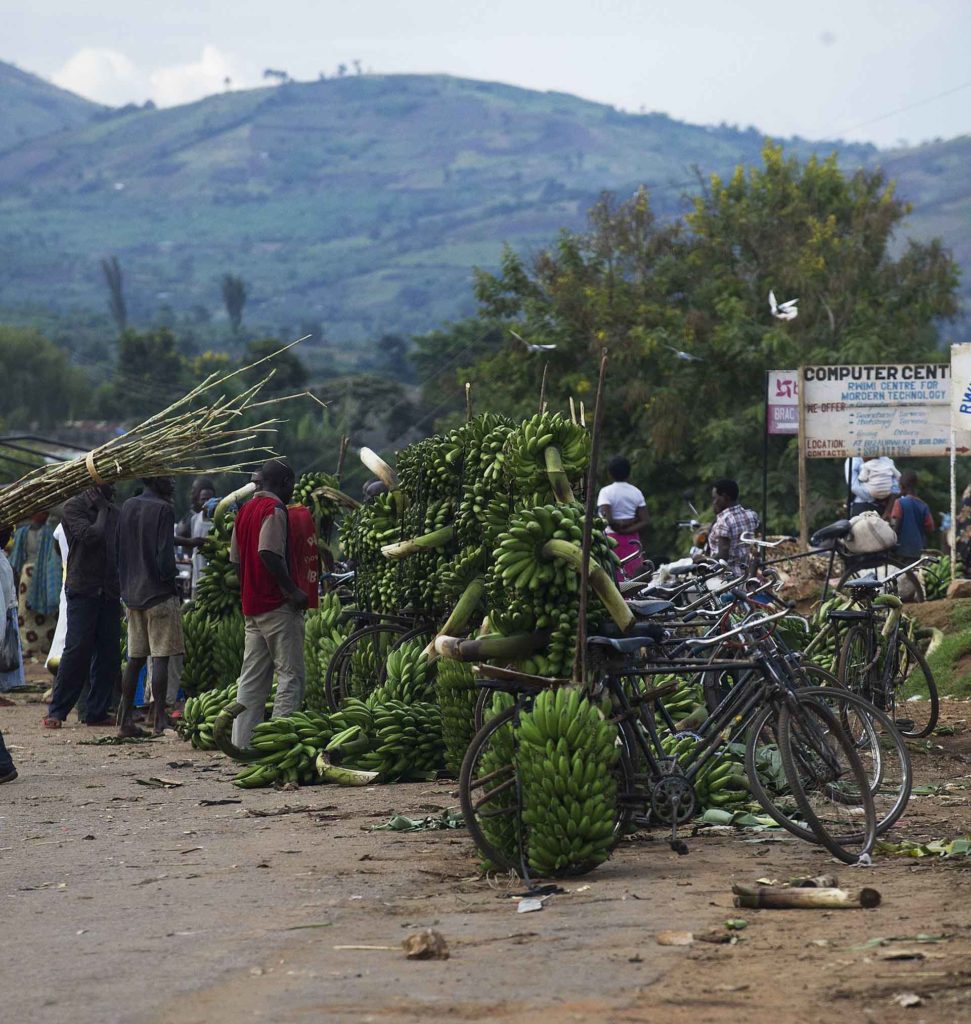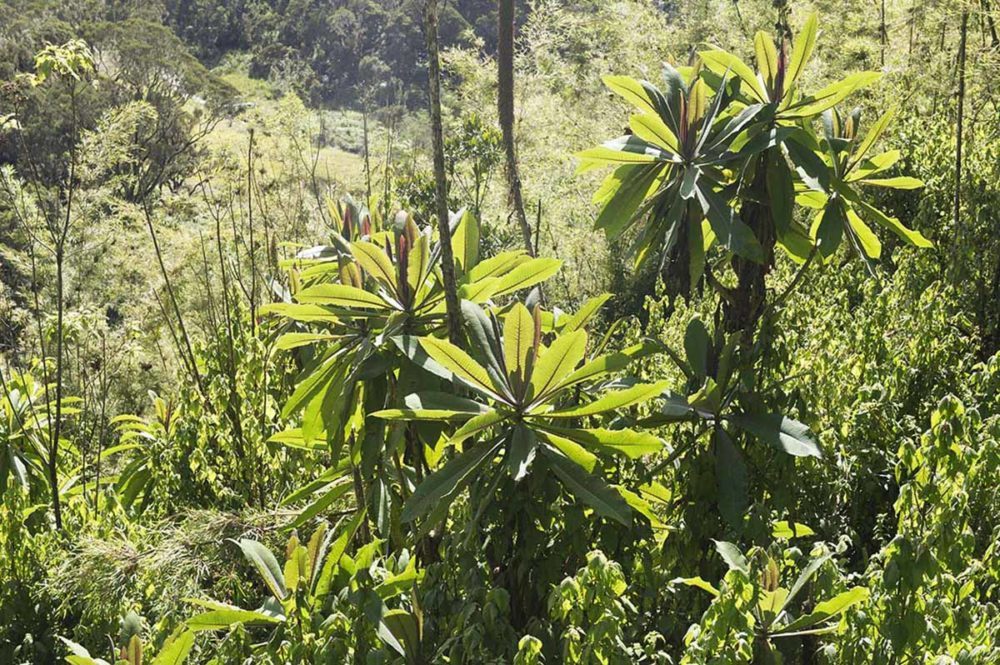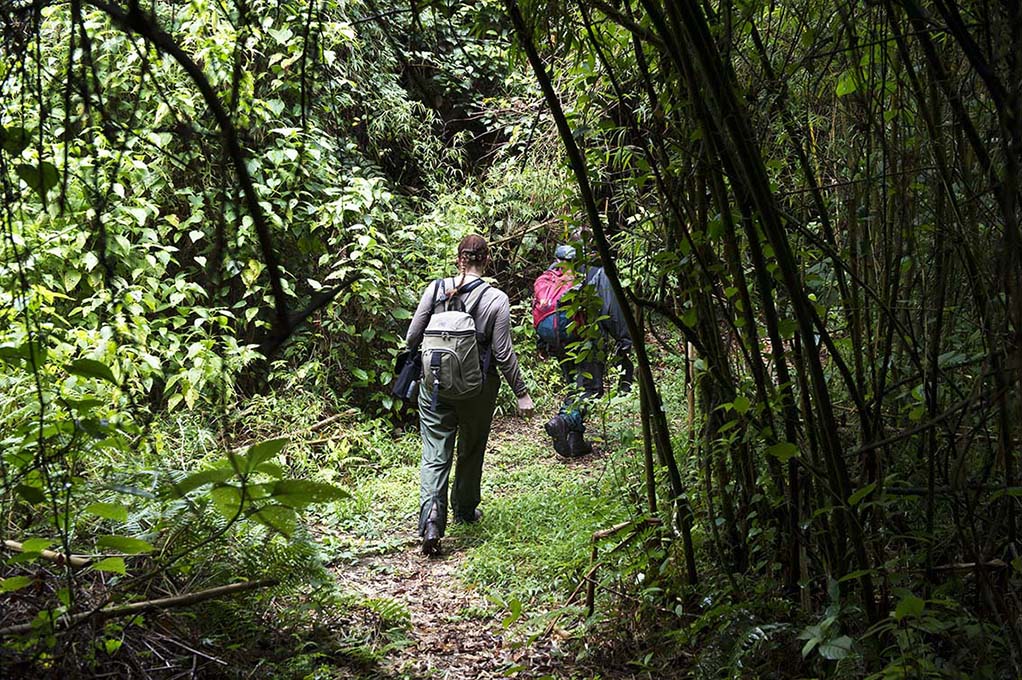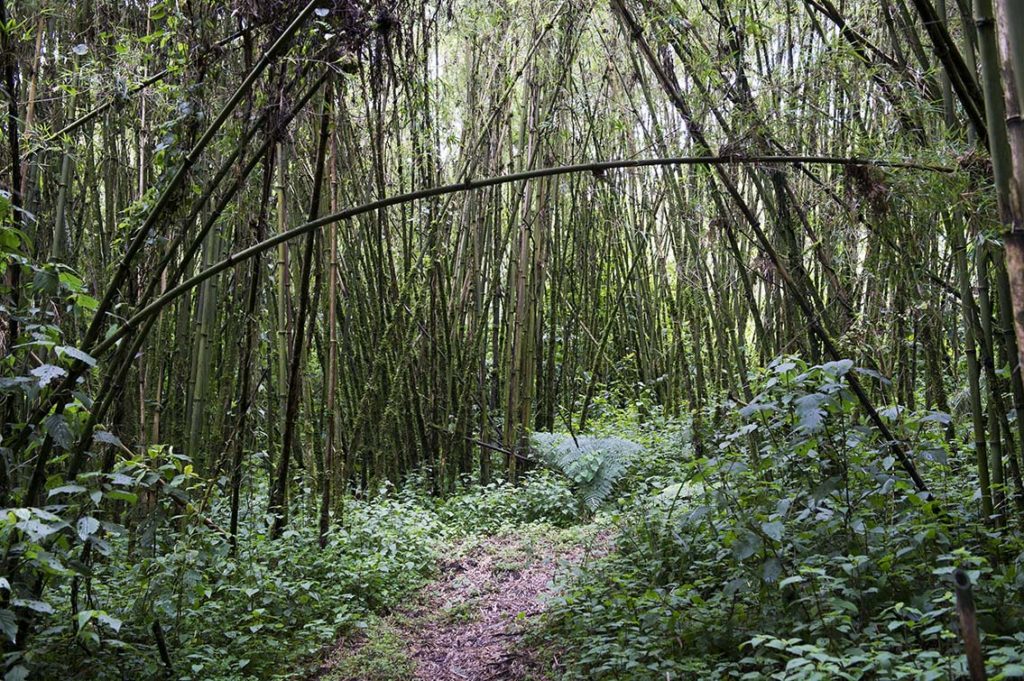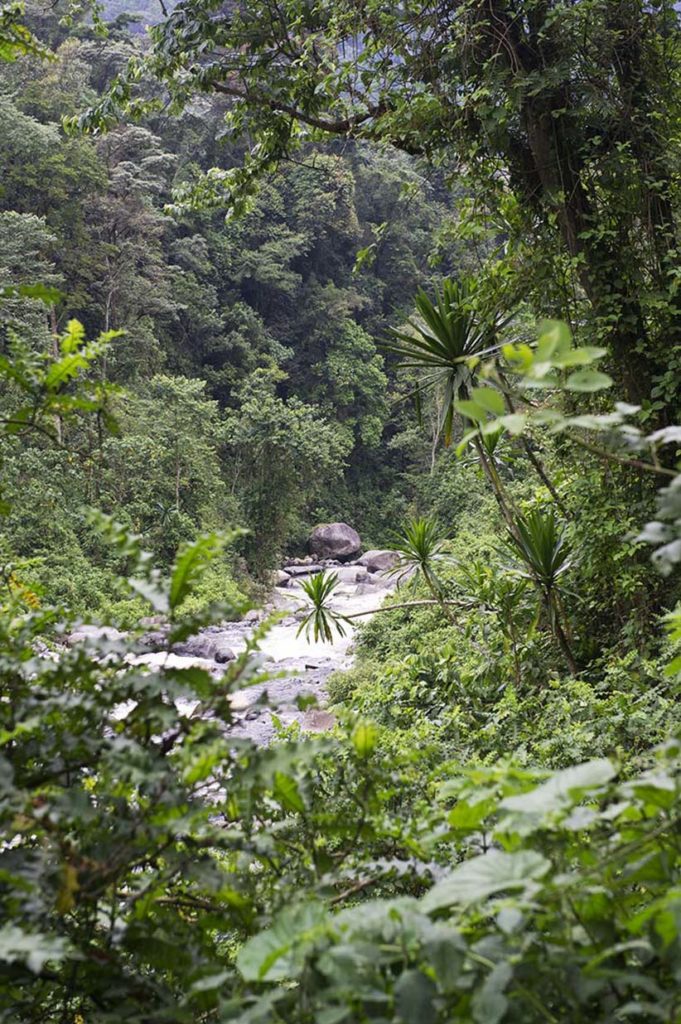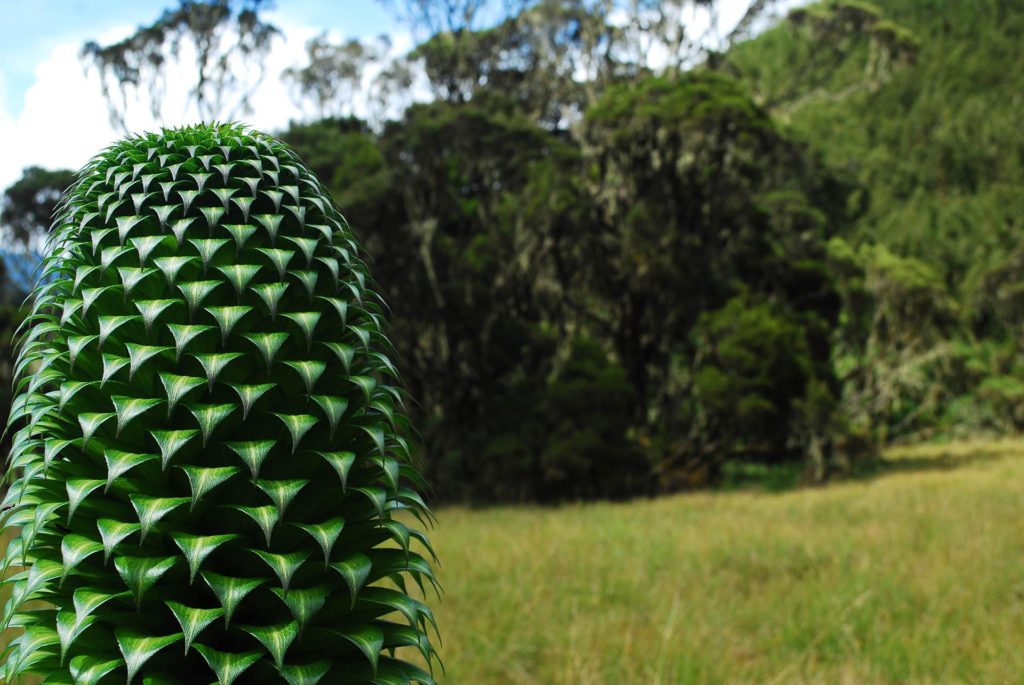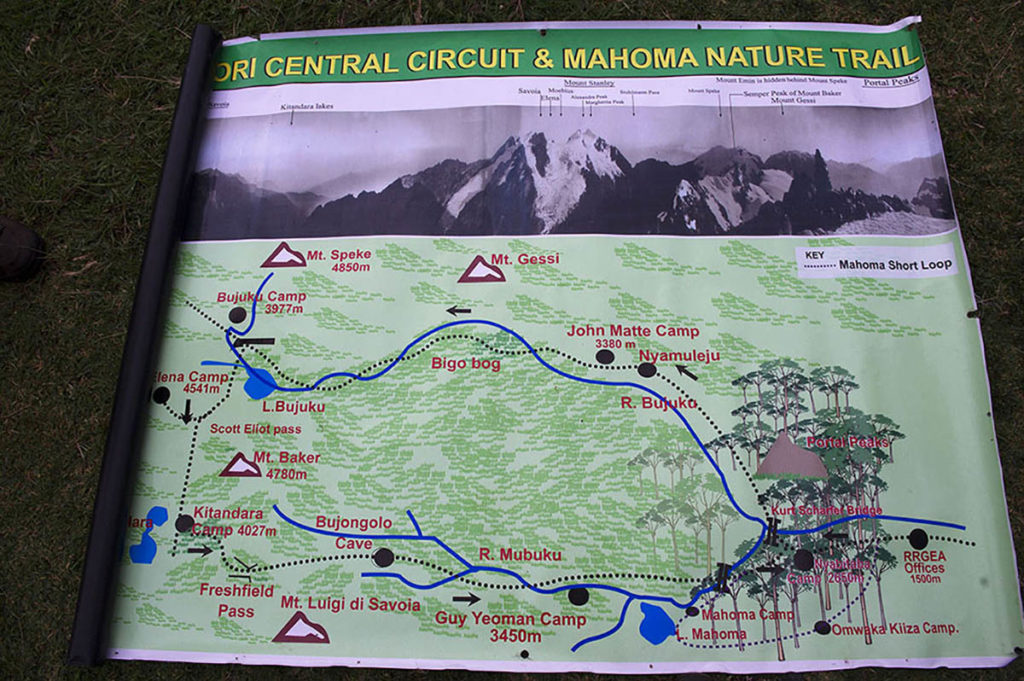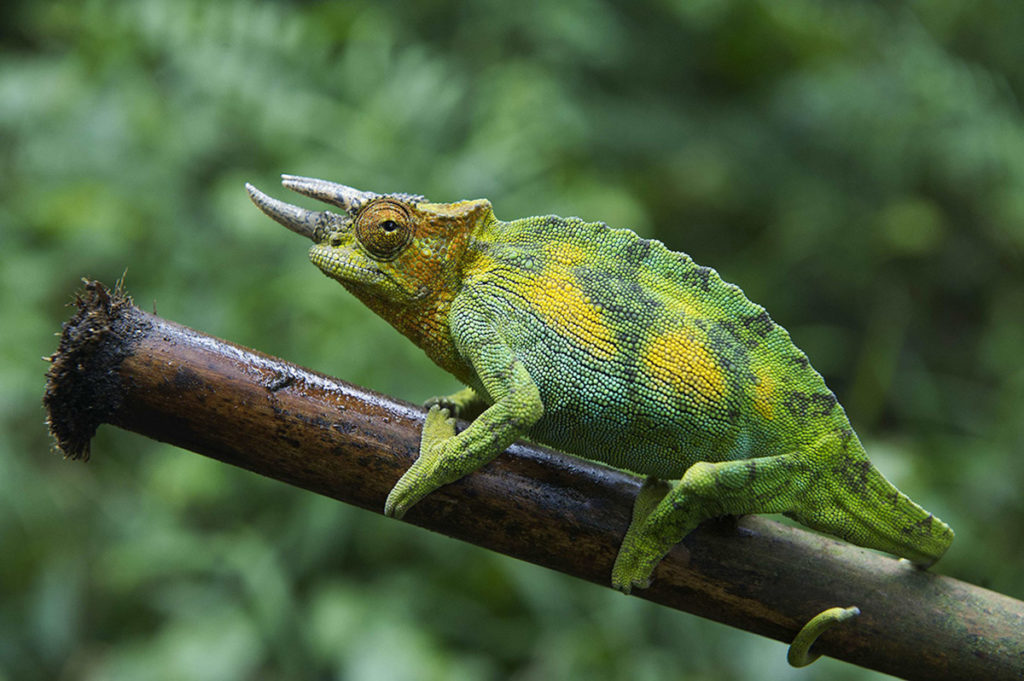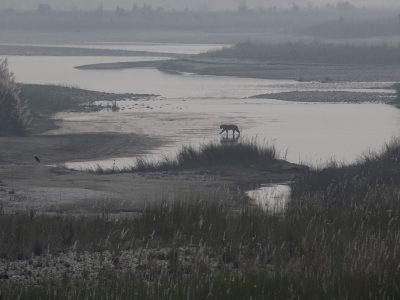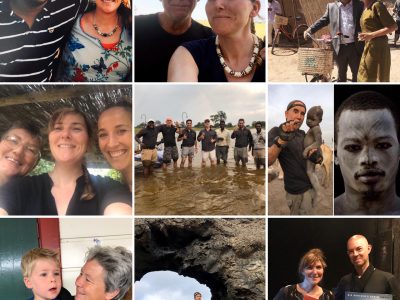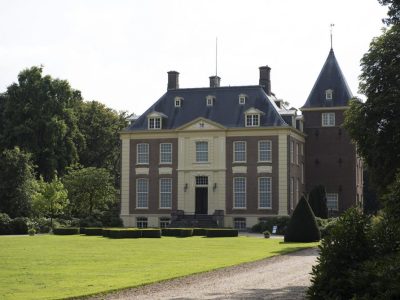The Nile has its origins there, just like mankind’s ‘closest’ relatives. Uganda is famous for its rare mountain gorillas, but is diverse in terms of wildlife, landscapes and vegetation, as in the breathtaking Rwenzori Mountains.
Text: Angelique van Os | Photography: Henk Bothof
The van is shaking violently in all directions. Quickly it closes the window, just before a cloud of dust covers the view. A greedy stuffed taxi van (matatu) rushes in front of you. Guide and driver Gordon Mawanda grumbles. Despite the fact that the Ugandans are used to the sometimes irresponsible ‘wild west’ behaviour of motorists and motorcyclists, they still have to be careful. Mawanda knows the routes like the back of his hand; he has been working in the tourist industry for over thirteen years. For more than five years, together with the Dutch couple Rob de Lange and Mechtild Alferink, he has been running the travel agency Rungu Tours, specialised in the ‘Pearl of Africa’.
Colourful street scene
“Are you ready for the African massage?” Mawanda asks. The adventure of unpaved roads starts shortly after leaving the capital Kampala. The human mass and the chaotic traffic decrease, while alternating landscapes and densely populated villages increase. Loose herds of Ankole cows – recognisable by their enormous horns and goats – regularly barricade the road. Children in school uniforms can be found walking along the roadside in the early morning. When our 4-wheel drive van passes by, it sounds loudly: ‘Muzungu, how are you?!” and children wave exuberantly. More and more white people are visiting Uganda, but in many parts of the country tourists attract a lot of visitors. Adults are more reserved, focus on their work: women carry huge wooden stick fur on their heads, while men use their bicycles to push large matokestrons – bananas – up the hills. Everywhere in the country there is a similar streetscape. This does not apply to the landscape, which changes constantly, from the hilly and water-rich savannah of Murchisson Falls, the vast and isolated Kidepo Valley, the green tea fields around the Kibale Forrest rainforest, to the high peaks of the Rwenzori Mountains, the robust Virguna volcanoes and the impenetrable forest of Bwindi. Uganda is a great fairy tale book, in which a new story unfolds on every page. It is true that some are better known than others, such as the mysterious history and myths about the origin of the Nile, which flows through Egypt into the Mediterranean Sea. Africa’s longest river flows up from the immense Lake Victoria and rises in the Victoria Nile, which crosses the beloved Murchison Falls park for 120 kilometres. The Victoria and Albert Nile veins merge into the Pearson Canal, with the Albert Nile merging into Sudan.
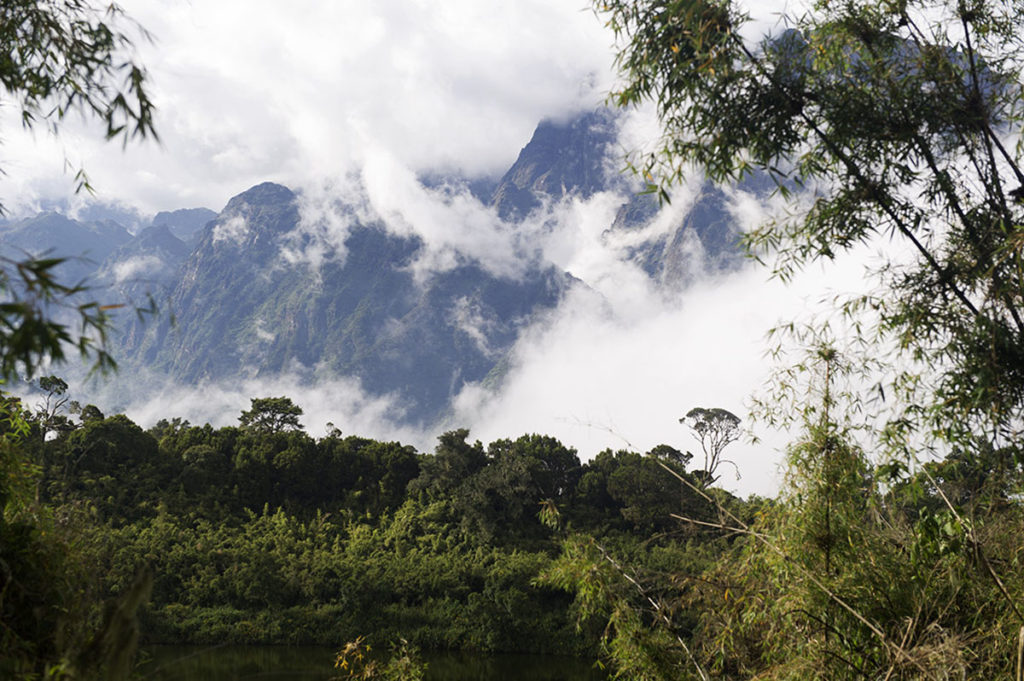
Less known is the Rwenzori Mountains. Located in the southwest and adjacent to the Democratic Republic of Congo. This national park (120 by 50 km) forms with its 5109m altitude, the third highest and largest mountain range of the continent. A big difference with Kilimanjaro (Tanzania) and Mount Kenya (Kenya) is that the ‘Mountains of the Moon’ only has a small 1500 to 2000 visitors per year. How is that possible? According to Ilischa Balrukku, who has worked for the Rwenzori Ranges Guides and Escorts Association(RRGEA) for 34 years, this is partly due to poor marketing and the level of physical difficulty, but also because of the political unrest that plagued the country. In the early 1970s there were many travel expeditions and researchers in the area. Idi Amin’s reign of terror abruptly put an end to this. The many civil wars and unrest with border areas and rebels around Congo isolated the Rwenzori, a gold mine for poachers of elephants, antelopes and rodents. Balrukku: “I was in Germany recently and people there are still asking about Idi Amin. They have no idea that Uganda has been a stable country since 2006. People are suspicious, but here is peace. Much has changed. Especially after another villain, Joseph Kony, disappeared from Uganda. It is important that film crews like the BBC show the world what a unique area this is.”
Mountains of the moon
Balrukku has worked in all ten national parks and climbed the highest mountains of Africa. The Rwenzoris are in his blood, his grandfather was one of the first porters and his father also worked in the park. “There is no comparable place, every 500 metres, every kilometre the vegetation changes. Even between peaks of 4000 to 5000 meters, the environment changes. You will be amazed. And bring rainwear, because the weather conditions are very unpredictable.”
We are curious. When we take our first steps into the park a day later, it starts to plummet. “Welcome to the Rwenzori”, says guide Lazarus Bwambale with a sour grin and looks at the greyish sky. Rain suits and boots emerge, which are soaked after only twenty minutes. Starting at an altitude of over 1600 meters, we climb up half sopping. The Mahoma trail has been in use since August 2012 and together with the ‘old path’, it’s the most interesting but also the most challenging of the eight different trekking routes of the vast park. After several days of climbing both paths end up on the eternal snow of the mountains Baker (4843m), Stanley (4563), Speke (4890m) and Margherita (5109), for which mountain experience is required.
Untouched forest
The rich and varied vegetation that Balrukku talks about so enthusiastically, is indeed overwhelming. The first 300m are long and steep. The centuries-old wet forest full of tropical plants, climbers, tall shrubs and metres-high trees changes after more than two hours of walking into a large open field full of enormous densely-grown ferns. The narrow path almost disappears into the green sea of plants. After about a hundred metres the path winds up. Big steps. Climbing takes a lot of energy. The soil is slippery; everywhere are leaves on the ground. Just stop and catch your breath. Suddenly there is a loud cry in the distance, a mix between a cat in heat and a goat. Guide Bwambale puts his finger on his mouth and beckons to stand next to him. “There are blue monkeys over there, rare primates. Get your binoculars. Do you see them?”, he asks. Through the flawless Swarovskiglas you can see a black monkey with a long graceful tail and a blue glow over his back. From a tree it peers towards us from about a hundred metres across the street. Suddenly a red tail and wings are racing by. “That was a red-blue Turaco”, the guide shouts. These shy birds only occur here.”
We walk on, in one day we want to reach the second camp at Lake Mahoma at 3300 meters. That’s a bit of a hike and a seven hour walk, but for experienced hikers and go-getters it’s time to do it. The untouched forest winds its way up via narrow paths, with a view over its Alps, covered by a haze of fog. Finally it clears up and the sun breaks through.
Where paradise
The transition to the ‘mikado forest’ of bamboo is the beginning of the second zone. The metre-high ‘rods’ form a mysterious still life, because many plants have fallen over. The sky is barely visible, that’s how dense the forest is. Bird song decreases, silence dominates. There are liana strings everywhere and the solid bamboo is covered with beds of moss. The fine leaves on the ground make way for blubbery sludge. “This is where the Elephant Path begins. Watch out, it’s slippery”, warns the guide. The shy mountain elephants travel at night, but with their droppings and strong smell they leave clear traces. Supported by a bamboo stick we plow ourselves through the slithering mud. Rubber boots are indispensable here. Just not paying attention means going down. “At least now you smell good”, the guide jokes. Out of nowhere the bamboo disappears and the fairy-like Chionanthus virginicus, better known as ‘Old man’s Beard’, appear. The long mossy threads are reminiscent of a long beard. After half an hour the elephant’s-tooth path disappears, we cross small rivers and arrive at the other side of the hill, where the beautiful Rukenga valley reveals itself. High swampy grasses prevail, supplemented by Old man’s Beard trees. Here and there you can spot the small ever flowering flowers (mimulopsis eliotti) and a number of giant lobelias showing off stately towards the horizon. The robust Lobelia bequaertii has a rosette-like collar and a diameter of about 80 cm. It is the only species with almost bowl-shaped bracts, which can be about five meters high. If you want to see more of the sometimes ten-metre-high plants, you should do a trekking of at least four days, because the lobelias are located between 3700 and 4300 metres high. At the edge of the valley there is an alpine river. It seems to be the most peaceful place on earth, a true paradise.

Modest way of life
The final climb to the second rest camp is steep and tough. The final climb to the second rest camp is steep and tough. We have a drink and then set up our tents at the edge of the Mahoma crater lake. Among the porters is also a woman, Gafina. She does this hard work so she can pay the school fees of her three children. Seven years ago her husband died and she became the breadwinner for her family. Every quarter she pays $70 per child, which is quite a challenge for a single parent. Why doesn’t she remarry? “In Uganda, a woman who remarries is expected to give birth to a child for her new husband. Since she is a bit older and has three children, she doesn’t like it,” translates Lazarus Bwambale. Yet the hardworking Gafina is happy: she has her children and family and that is the most important thing. She is not the only one, the modest way of life is an important characteristic of Ugandans. For Westerners, a first acquaintance with the streets and the population may be shocking and poor, yet most people who live in primitive houses look quite happy. They have enough food, a roof over their heads, work and they have each other. Even the poorest have a future, as the current president Yoweri Museveni has proven. He grew up in a very poor family. Our tour guide, Gordon Mawanda, shares a similar experience, with four of his seven siblings successfully completing university. “I had never thought before that I would run my own travel agency or that my brother would become a doctor. However, I was determined to achieve something in my life. Poor students who do their best at school and excel in results are embraced. They receive a scholarship and already have the prospect of a job before graduation, as in my case in tourism.”
The next day the descent is a lot faster, but it is treacherous. The paths are narrow, rocky and have a big impact on the knees and thighs. Fortunately it is dry. While Gafina catches up with us, she suddenly stops and walks towards a group of ferns. Carefully with her walking stick she conjures up a beautiful three-horned chameleon, a rare species that only occurs here. The last part, around the wild river Kiohio, is called the Monthone zone and is reminiscent of a green savannah; an open area full of low bushes, completed with ancient tropical trees, a beautiful and surprising end. After about four hours of walking, we have had enough and we agree with the legendary words of explorer Douglas Freshfield: “You can be familiar with the Alps and the Caucasus, the Himalayas and the Rocky Mountains, if you haven’t wandered around in the Rwenzori Mountains, there’s still a lot to discover”.
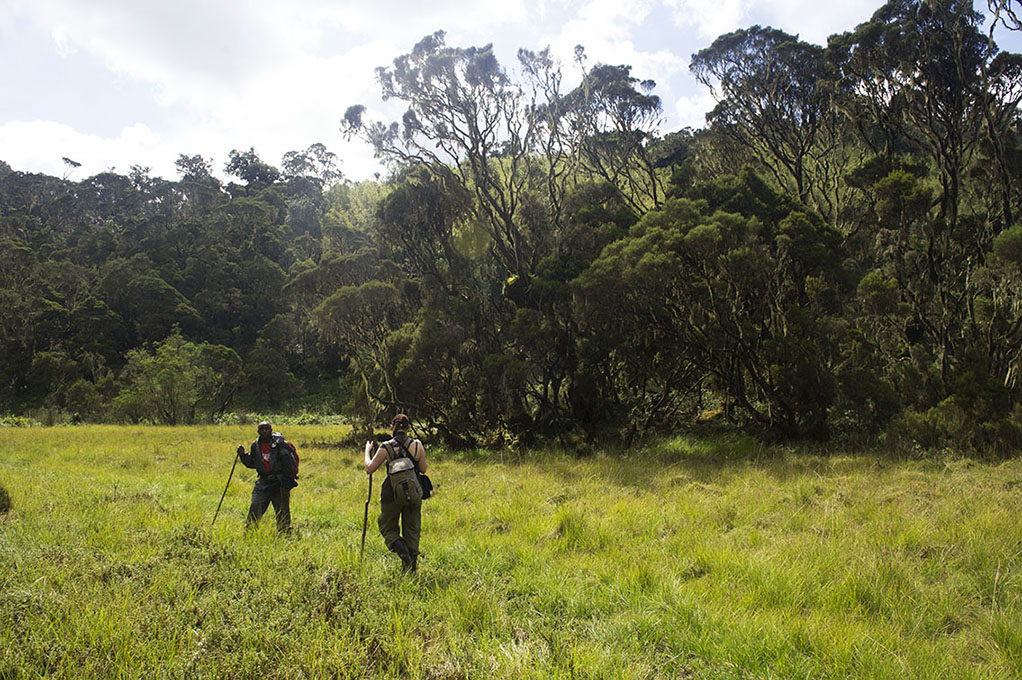
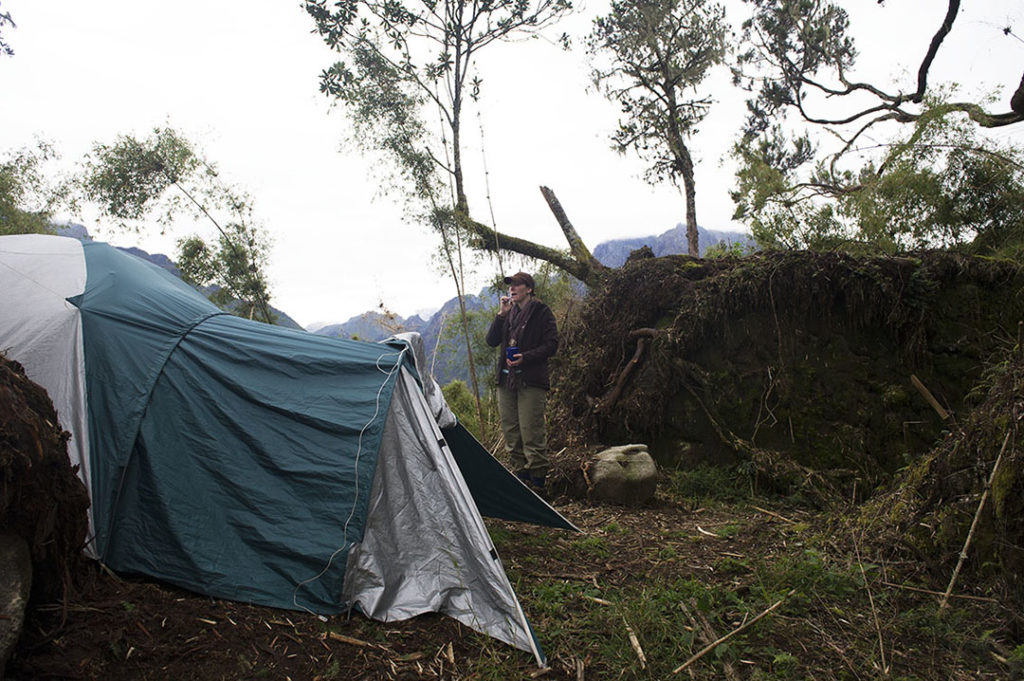
Read HERE Part II – Primates of Uganda
More information: ugandawildlife.org rwenzorimountaineeringservice.com | friendagorilla.org
This trip was made possible thanks to Rungu Tours, (rungutours.com).
Further thanks to Swarovski Optik and Nikon Nederland (Roeland Koenen) for borrowing the Nikkor AF-S VR 200-400mm lens.

